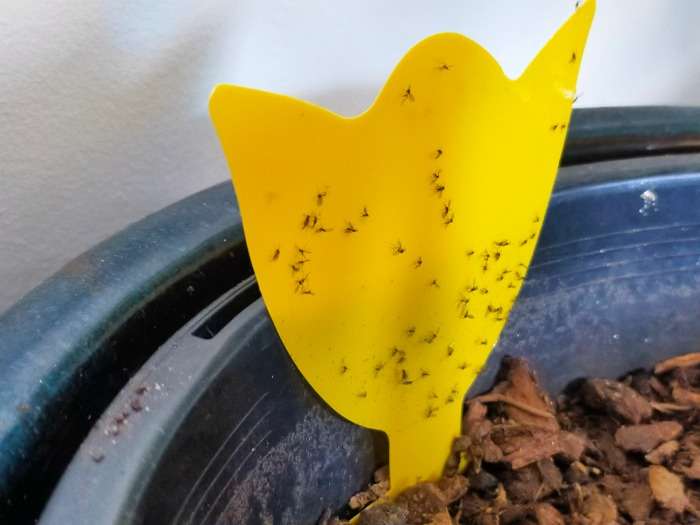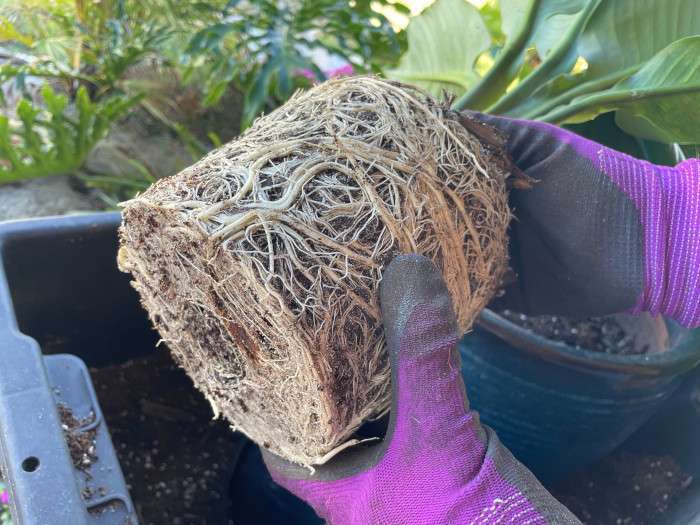Light is everything for Dieffenbachia. Get it wrong, and even a low-maintenance plant like this can have issues—leggy stems, scorched leaves, or sudden leaf drop. But get it right? You’ll have a lush, full plant with bold, vibrant foliage that makes a great centrepiece.
Dieffenbachia, also known as Dumb Cane, is one of my favourite plants. But like any plant, it has its quirks. After years of growing a few different varieties, I’ve learned what works best for them. Today, I’m sharing what I’ve learned about Dieffenbachia plant care, so you can keep yours thriving.
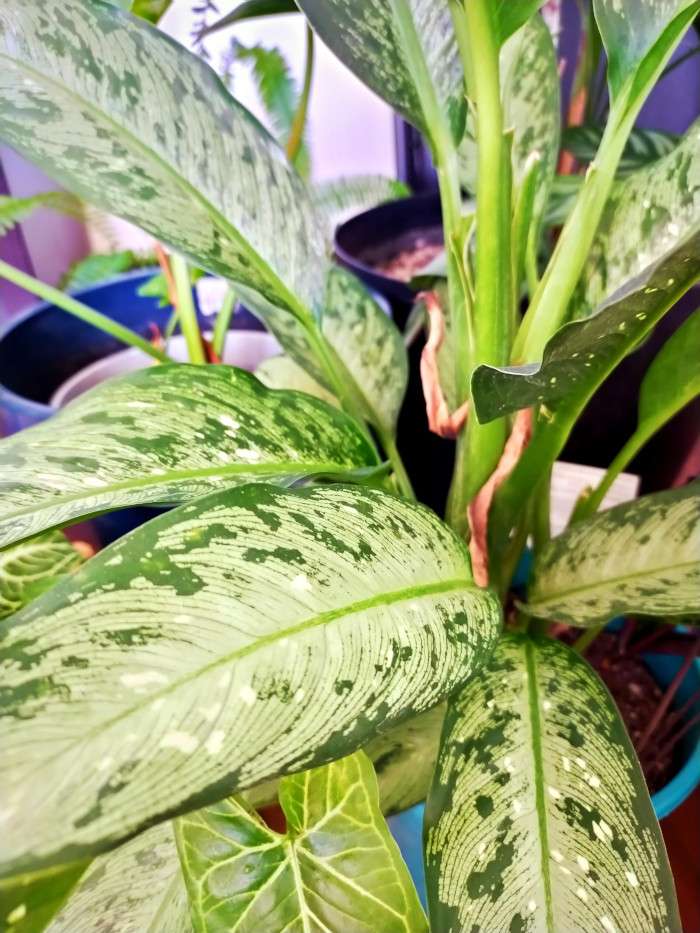
Dieffenbachia Light Requirements
While it’s often said that Dieffenbachia can tolerate low light, In my experience, it definitely won’t thrive in those conditions. It might survive, but you won’t get those lush, vibrant leaves that make it such a striking plant. So, what are the optimal Dumb Cane light requirements for your plant?
Place in Bright Indirect Light
Bright indirect light is key for Dieffenbachia to grow large, healthy leaves with good variegation. Bright light also helps the plant absorb moisture properly, which is crucial to avoid soggy, yellow, or brown leaves.
The best spot for your Dieffenbachia is near a window, but placing it directly in front of one can sometimes cause leaf burn or pale leaves. To meet your Dieffenbachia light requirements, place your plant about 1–3 meters (6.5–10 ft) from the window.
If your window has eaves on the outside, you can move your Dieffenbachia a little closer to the window. A little bit of direct morning sun through the window in these conditions is great for encouraging larger, healthier leaves, without the risk of burning them.
Tip: If you don’t have access to enough natural light, a grow light can be a great substitute—it’s cheap and effective.
How to Tell If Your Dieffenbachia Is in a Good Spot
You can use the plant’s variegation as a clue to its lighting conditions. If the leaves are very bright with little to no darker coloration, the light might be too intense. This can stress the plant and lead to issues like leaf burn or pale leaves.

On the other hand, if the plant shows minimal variegation, very green leaves, or small, stunted growth, it might be an indication that the Dumb Cane light requirements aren’t being met. The lack of lighter pigments, which help reflect light, means the plant isn’t getting enough light for optimal growth.
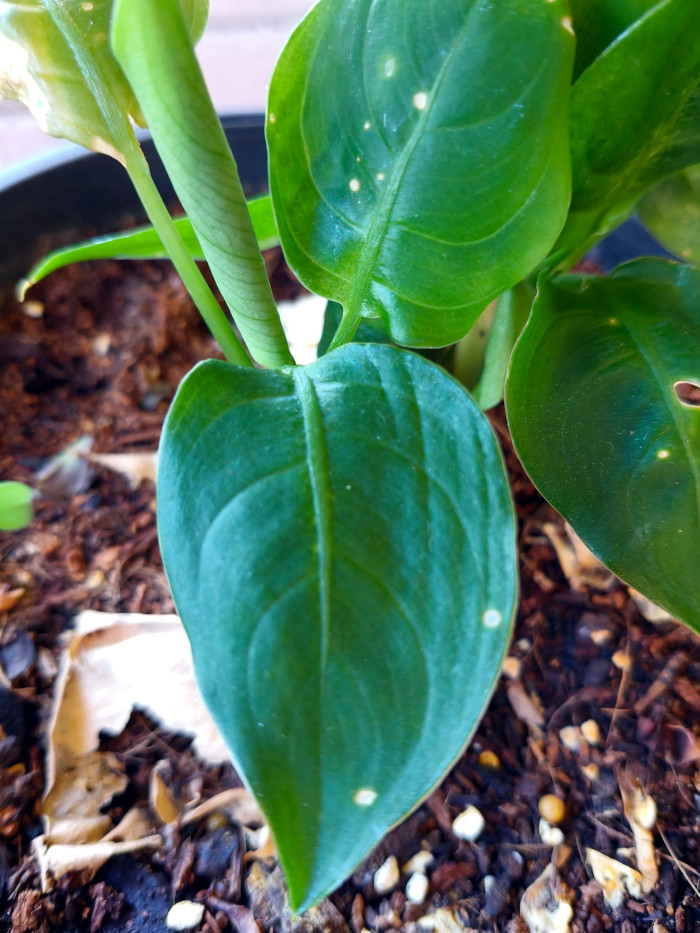
In general, the more vibrant and balanced the variegation, the better your plant is likely doing in terms of light.
Dieffenbachia Water Requirements
When it comes to Dieffenbachia plant care, it’s not like most plants that need constant moisture. In fact, it thrives best when allowed to dry out a bit between waterings.
When to Water Dieffenbachia
The amount of light your Dieffenbachia gets plays a big role in how often you should water it. In bright light, where the plant is growing actively, it will likely need more water. In a shaded spot, you’ll need to be more cautious, as the plant will use less water in lower light conditions.
I generally check my Dieffenbachia once a week. In brighter conditions, I usually let the soil dry out for about a week before watering again. During the winter months, I extend this to about two weeks due to reduced light and slower growth.
Tip: I rotate my plants ¼ of the way every time I water to encourage even growth on all sides.
How to Know If Your Dieffenbachia Needs Water
Dieffenbachia are pretty good at telling you when they’re thirsty. The most noticeable sign that it’s time to water is wilting. If the plant looks droopy and soft, it likely needs a drink. Don’t worry though, once you give it a good soak, it’ll perk back up quickly.
When it’s time to water, give the plant a thorough soak until the soil is nice and moist, but be sure not to leave it sitting in water. Overwatering is much worse than underwatering. If you’re unsure, stick your finger into the soil. If it feels cool or damp, wait a few extra days before watering.
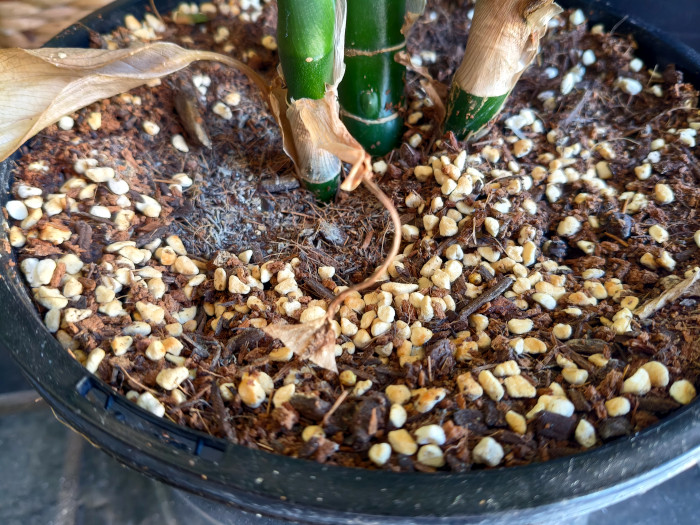
Tip: Dieffenbachia isn’t very fussy about tap water, but if filtered water is available, it’s always a better option for your plants.
Dieffenbachia Soil Requirements
Dieffenbachia doesn’t like to sit in soggy soil, but it also doesn’t want to dry out completely. Soil is where many people go wrong, as regular potting mixes tend to be too heavy and hold too much moisture, leading to root rot and yellow leaves. So, what kind of soil does Dieffenbachia need?
Use a Fast Draining Mix
Dieffenbachia soil mix should be light and well-draining. I’ve found that a lighter indoor mix works well. If you want something chunkier, similar to what’s used for aroids, that’s another good option. I’ve used both, and they’ve both worked for me. These days, though, I tend to prefer the chunkier mix—it just works for my plants and routine.
The key is a fast-draining mix that still retains some moisture, giving your Dieffenbachia the best of both worlds.
Tip: In low light, use a well-draining mix to prevent water from sitting too long, while in bright light, a mix that retains moisture longer can help keep your plant hydrated. Adjust your growing mix to match your plant’s environment for optimal growth.
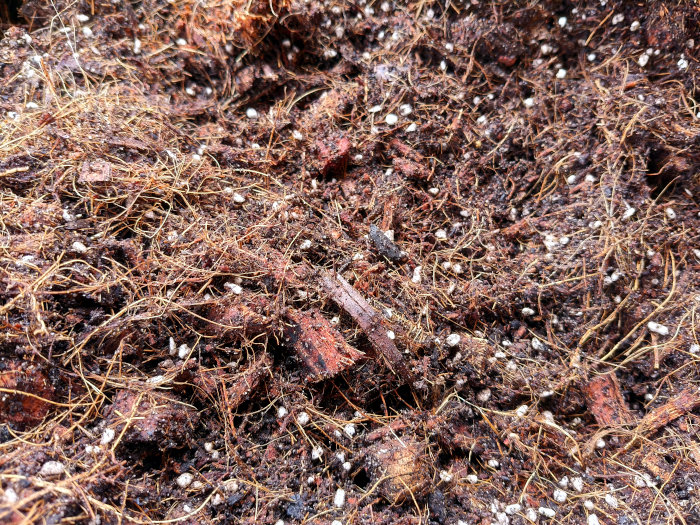
Dieffenbachia Temperature
Dieffenbachia is native to tropical regions, so it thrives in warm temperatures. However, it’s best to keep it away from direct heat sources like heaters or fireplaces, as extreme temperatures can stress the plant.
The ideal Dumb Cane temperature range is between 20-31°C (68-88°F) for optimal growth. But don’t stress too much about it—just make sure it doesn’t freeze.
A cool room is fine, but avoid placing your Dieffenbachia in direct airflow from air conditioning. The cold air can damage the leaves and affect the plant’s overall health.
Dieffenbachia Humidity
Dieffenbachia thrives in humid environments, much like its tropical origins, but it’s quite adaptable. While it might do best in higher humidity, I’ve found it does just fine even in my hot, dry climate.
For a little extra Dumb Cane care, consider using a humidifier to boost the moisture in the air. However, it’s not a necessity. Just make sure to keep the humidifier away from walls to prevent mould growth, and clean it regularly to maintain air quality for you and your plant.
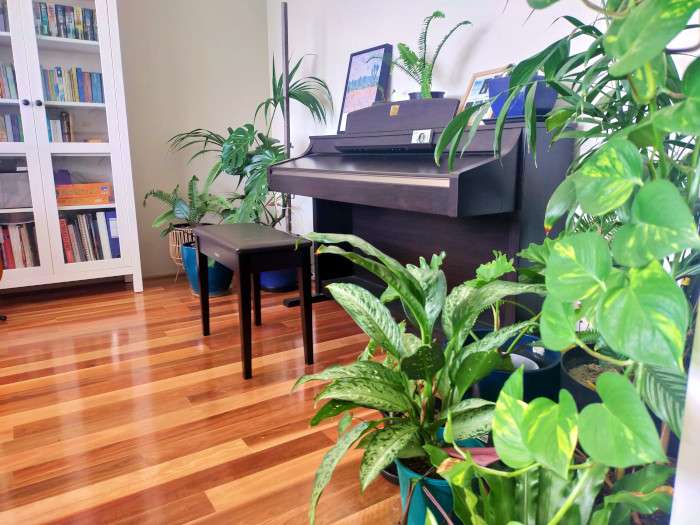
Dieffenbachia Care and Maintenance
Once the right conditions are in place, regular maintenance is crucial for keeping your Dieffenbachia healthy. Neglecting upkeep can lead to problems, so staying on top of your dumb cane care will help your plant thrive.
Here’s a simple weekly routine to keep your Dieffenbachia in top shape:
- Monitor New Growth: Vibrant new leaves indicate your plant is thriving and the conditions are right.
- Check Watering Needs: Water when the top inch of soil feels dry.
- Clean Dust from Leaves: Wipe leaves to prevent pests and increase light absorption.
- Inspect for Pests: Check for pests regularly to catch any issues early.
- Rotate Your Plant: Turn your Dieffenbachia ¼ turn each time you water to ensure even growth on all sides.
Note: I like to check my Dieffenbachia weekly, especially with my fast-draining potting mix. However, if you have a different setup, feel free to adjust and find what works best for you.
Fertilize Your Dieffenbachia
If you’re aiming for large leaves and healthy growth, fertilizing will definitely be important, especially if you’re using a light mix that doesn’t have many nutrients. I personally use a slow-release granular fertilizer—just sprinkle it in the pot and forget about it for about six months. It’s convenient and does the job without needing constant attention.
Plants in sunnier spots will generally grow faster and require more fertilizer compared to those in shadier areas.
If you prefer liquid fertilizer, you can add it with your watering routine. I suggest holding back a little in winter when your Dieffenbachia is more dormant, and increasing the amount during the spring and summer when it’s in full growth mode.
Tip: If you’re not sure about how much fertilizer to use, it’s better to under-fertilize than over-fertilize. Too much fertilizer can burn the roots and damage your Dieffenbachia.
Look Out for Common Dieffenbachia Pests
If you don’t regularly check your plants for pests, you might end up with an unpleasant surprise that can quickly get out of control. While Dieffenbachia doesn’t suffer from pests as often as other plants, there are still a few to watch for, mostly sap-sucking insects, including:
- Scale Insects: These are common pests for Dumb Cane. They attach to leaves and stems, appearing as small, round, brown, or black bumps.
- Spider Mites: Look for tiny red spiders or webs on your plant.
- Mealybugs: They look like small, white, cotton-like masses on the plant. Usually tucked into crevices.
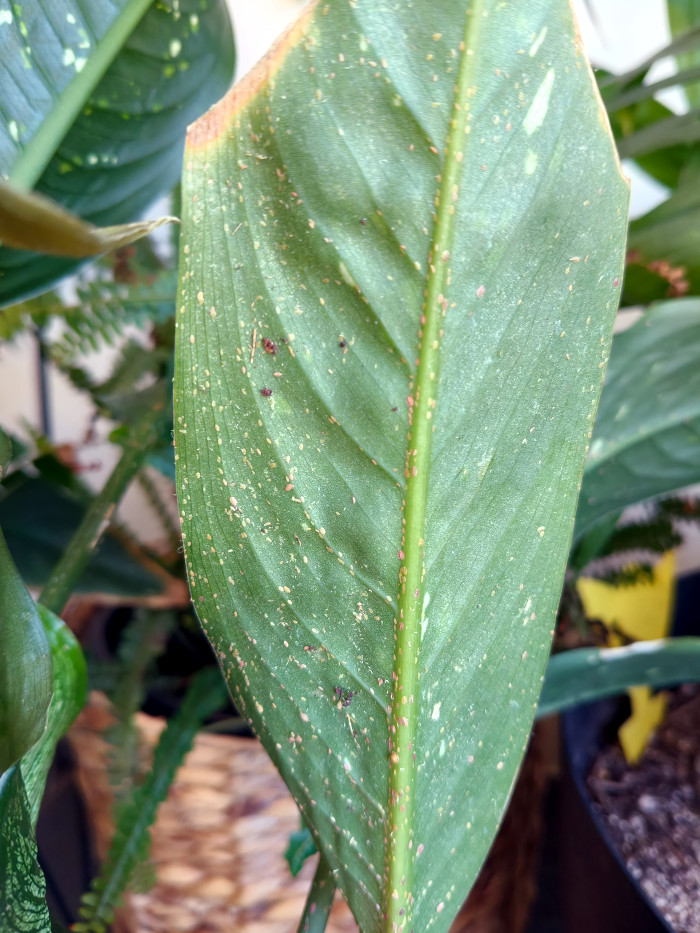
Tip: Wipe down your Dieffenbachia leaves every week or so to remove dust and reduce the risk of pests, while also keeping an eye out for any signs of trouble.
Dieffenbachia Repotting
Dieffenbachia are quite hardy and respond well to repotting and propagating. Use a well-draining potting mix to avoid waterlogged soil, which they don’t tolerate. When repotting, choose a pot that’s the right size for your plant; too large and you risk soggy roots, leading to potential problems down the line.
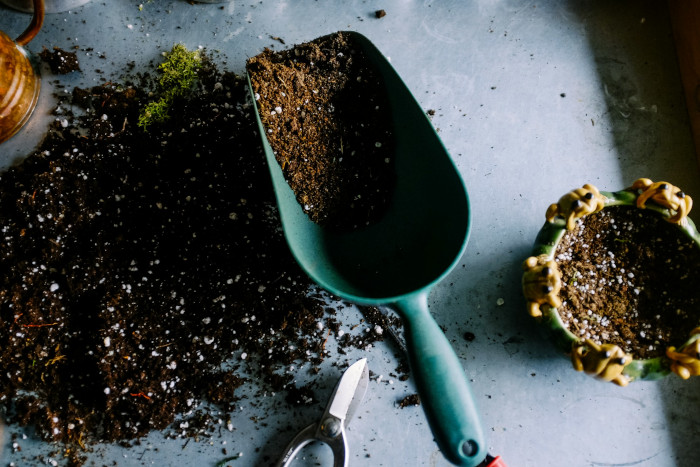
How to Trim Dieffenbachia
Trimming should be done as part of your dumb cane plant care to keep your plants looking tidy and encourage healthy growth. Here are some tips for effective trimming:
- Remove Dead or Damaged Leaves: Cut off any yellow or brown leaves to encourage new growth. The plant will recover quickly once these areas are removed.
- Fix Leggy Growth: Trim any leggy or overgrown sections to maintain a compact, bushy shape. This not only improves the plant’s appearance but also helps it grow healthier.
- Clean Tools: Always use clean, sharp scissors or pruning shears to make precise cuts and prevent spreading diseases.
- Trimming Technique: Cut just above a node (where a leaf attaches to the stem) or at the base of the stem. This encourages new growth from the cut point.
Dieffenbachia Varieties
There are a few cool Dieffenbachia varieties to choose from.
Dieffenbachia ‘Tiki‘: My favourite variety with its wavy, ruffled leaves, Tiki has green foliage spotted with grey, green and white.

Dieffenbachia ‘Camille’: This variety has large, cream-colored leaves with green edges giving it a striking appearance.
Dieffenbachia ‘Compacta’: A compact and bushy variety that has green leaves with cream or white centres.
Dieffenbachia ‘Tropic Snow’: This variety has broad, glossy leaves that are dark green with white or cream marbling throughout, providing a lush and tropical look.
Conclusion
Dieffenbachia is one of my favorites, and if you’ve read this far, I’m guessing it’s one of yours too. By providing the right growing conditions—focusing on lighting, watering, and well-draining soil—you can really make it thrive.
If you’ve been having trouble keeping your Dieffenbachia looking its best, try out these tips and see if you can unlock its full potential.

FAQ
Is Dieffenbachia Toxic to Dogs?
Yes, Dieffenbachia is toxic to both humans and pets, including dogs and cats. The plant contains calcium oxalate crystals, which can cause:
- Difficulty speaking
- Drooling
- Mouth irritation
- Difficulty swallowing
- Swelling of lips or tongue
- Vomiting (severe cases)
- Difficulty breathing (severe cases)
- Skin irritation (if touched)
- Burning sensations (if ingested)
- Swelling
Keep it our of reach and wash your hands after handling.

